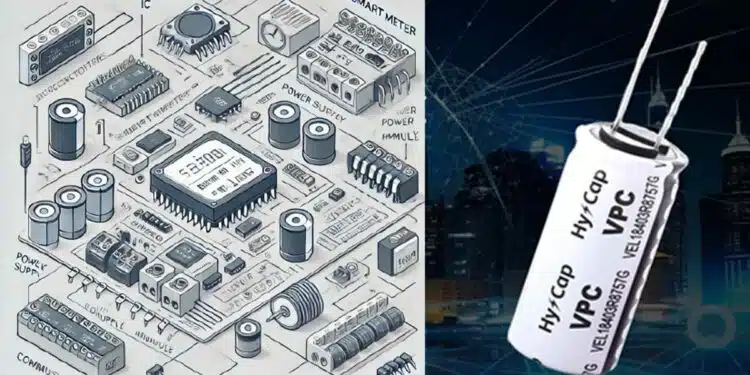VINATech in this article explains the role of supercapacitors in improving the reliability and efficiency of smart meters, essential for modern energy infrastructure.
Smart meters represent a cornerstone in the evolution of modern energy infrastructure, enabling precise real-time monitoring and efficient control of electricity, gas, and water consumption.
As global efforts intensify to reduce carbon emissions and improve energy efficiency, smart meters are essential for advancing sustainable energy management. However, their performance heavily relies on robust, responsive, and durable energy storage systems.
The Challenge: Ensuring Reliable Power in Smart Metering
Smart meters must maintain operational integrity even during power interruptions or communication failures. Traditional batteries often struggle to meet the demands for rapid response, long-term stability, and resilience in harsh environmental conditions. This operational gap underscores the critical role of supercapacitors as either complementary components or alternatives to conventional batteries.
Energy Storage Requirements in Smart Meters
To guarantee data integrity and continuous functionality, smart meters require energy storage solutions capable of:
- Providing Backup Power During Outages
- Supercapacitors can deliver immediate power bursts to protect critical data, maintain communication links, and support grid stability during unexpected power losses.
- Supporting Long Operational Lifespan
- With high charge/discharge cycle capabilities, supercapacitors reduce the need for frequent replacements, thus lowering the total cost of ownership (TCO).
- Withstanding Environmental Variations
- Supercapacitors operate efficiently across a wide temperature range, minimizing performance risks and enhancing overall system safety.
Technical Benefits of Supercapacitors in Smart Meters
The inherent characteristics of supercapacitors make them highly suitable for smart metering applications:
- Rapid Charge and Discharge Capability
- Supercapacitors respond within milliseconds, ensuring quick power delivery for critical functions such as data logging and communication during outages.
- High Power Density
- They offer superior power density compared to traditional batteries, enabling compact designs without compromising performance.
- Extended Lifespan
- Capable of enduring over 20,000 charge/discharge cycles, supercapacitors significantly outlast conventional batteries, reducing maintenance frequency.
- Temperature Resilience
- Supercapacitors maintain performance from -25°C to +70°C, making them reliable in diverse climatic conditions.
- Enhanced Safety
- Their solid-state construction minimizes risks associated with leakage, thermal runaway, and fire hazards.
- Eco-Friendly Attributes
- Supercapacitors have lower environmental impacts due to their long service life and reduced material degradation.
Applications Beyond Smart Meters
While their benefits are exemplary in smart metering, supercapacitors are equally effective in other sectors requiring high-power, reliable energy storage solutions, including:
- IoT Devices
- Energy Storage Systems
- Telecommunication Equipment
- Automotive Electronics
Conclusion
Supercapacitors are pivotal in enhancing the reliability, efficiency, and sustainability of smart meters. Their technical superiority in rapid power delivery, longevity, safety, and environmental resilience addresses the core challenges of modern energy metering systems.
As the energy landscape continues to evolve, supercapacitors stand out as a key technology driving the future of smart energy management.
































